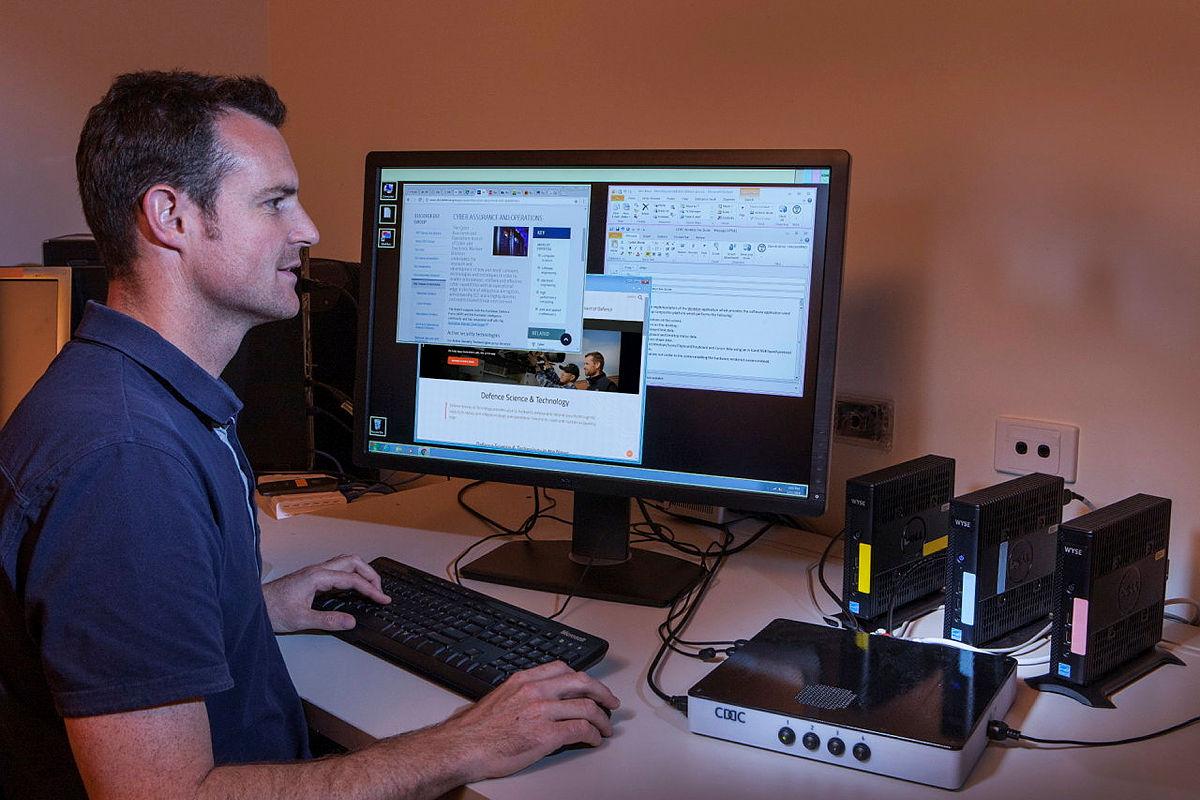Defence scientists, and their collaborators in CSIRO’s Data61 digital research network and academia, have won the Defence Science and Technology Eureka Prize for Outstanding Science in Safeguarding Australia for their Cross Domain Desktop Compositor (CDDC).
The CDDC is a first-of-its-kind technology that enables seamless desktop access to data across physically isolated networks, backed by mathematically verified security guarantees.
Data is kept safe from hackers and usability is enhanced by the CDDC, resulting in faster and more effective decision-making processes.
It has been a long-standing challenge to find a way for users to work efficiently across multiple computer networks without risking important data unintentionally leaking between them, but also to provide an intuitive user experience.
Typically, information fusion takes place inside a computing environment, enabled by a cross-domain solution allowing the transfer of data between networks.
The CDDC avoids the need for the unnecessary transfer of data between different networks as the visually infused information the user receives, and can act on, is never stored or transmitted in this form, creating a far more secure system.
The CDDC was originally conceived and prototyped as a hardware-only device by Mark Beaumont, of Defence Science and Technology Group (DSTG).
He explained why the CDDC was critical for Defence.
“For individuals, small businesses and government departments alike, failing to keep important information secure could have serious consequences,” Mr Beaumont said.
“But, for large organisations that need to put in place more advanced security arrangements, like Defence, ensuring that information is secure might entail a trade-off that makes it harder for employees to do their jobs.
“Sometimes it makes sense to impede the flow of data inside an organisation intentionally by preventing computer networks from communicating with each other.
“Within many classified organisations, networks with different security classifications are isolated.
“This approach greatly enhances security, but is suboptimal in terms of productivity.”
Collaboration between Defence, the CSIRO and Associate Professor Toby Murray at the University of Melbourne led to the developments that underpinned the mathematically proven security of the CDDC.
Chief of DSTG’s Cyber and Electronic Warfare Division Dale Lambert said the collaborative nature of the device was critical to its success.
“Information environments are now fundamental to everything we do in society,” Dr Lambert said.
“The CDDC is an important example of Australian ingenuity being assembled from across government, universities and publicly funded agencies to deliver a product that can secure Australia’s engagement with those critical information environments.”
Mr Beaumont and Associate Professor Murray worked together to redesign the CDDC to include software components, increasing its flexibility and therefore enhancing its usability.
Later research by Associate Professor Murray and University of Melbourne colleague Dr Robert Sison led to the development of methods to prove the device’s software-based design was secure.
“The strong collaboration between Defence, CSIRO and university partners highlights the importance of leveraging expertise where it exists,” Mr Beaumont said.
“We would not have been able to achieve the outcomes and the level of security required for Defence without all of the partners in this project working together.”
The CDDC is currently undergoing a technology-transition process from laboratory research to prototype, with a production-ready device expected to be realised in the first half of next year.
The simplicity of the design means it could be manufactured as a sovereign capability here in Australia.
Using Australian technology to secure Australian interests, such as critical infrastructure or government networks, would reduce risks associated with relying on overseas supply chains.












